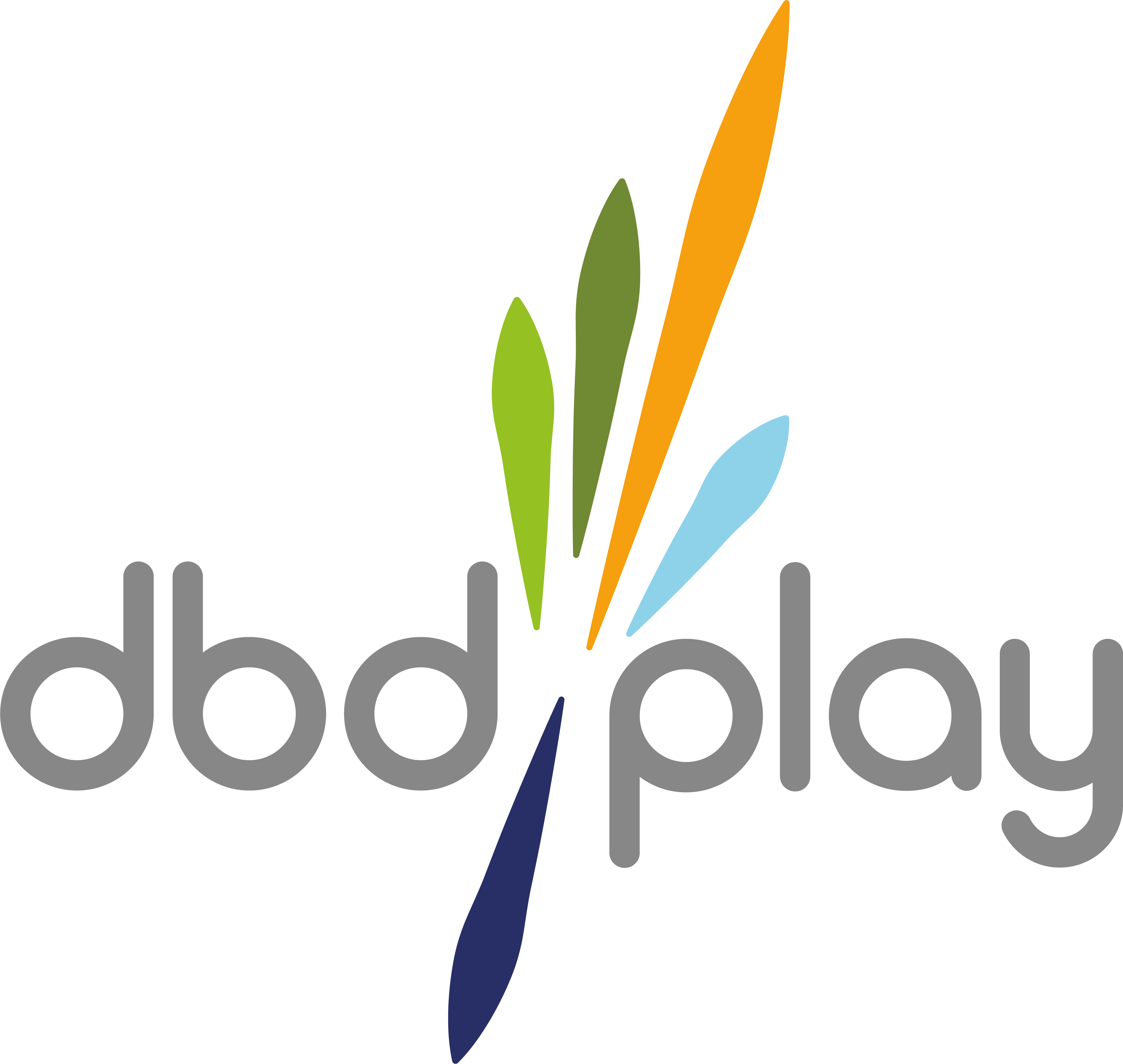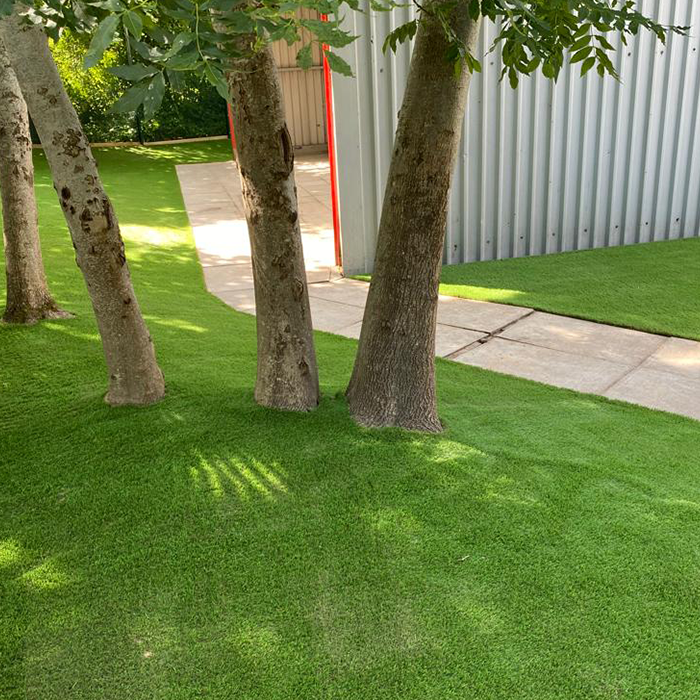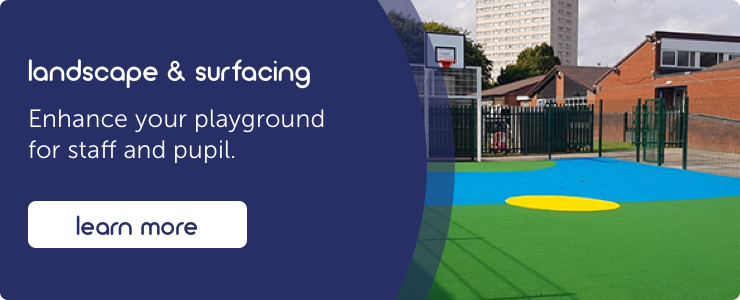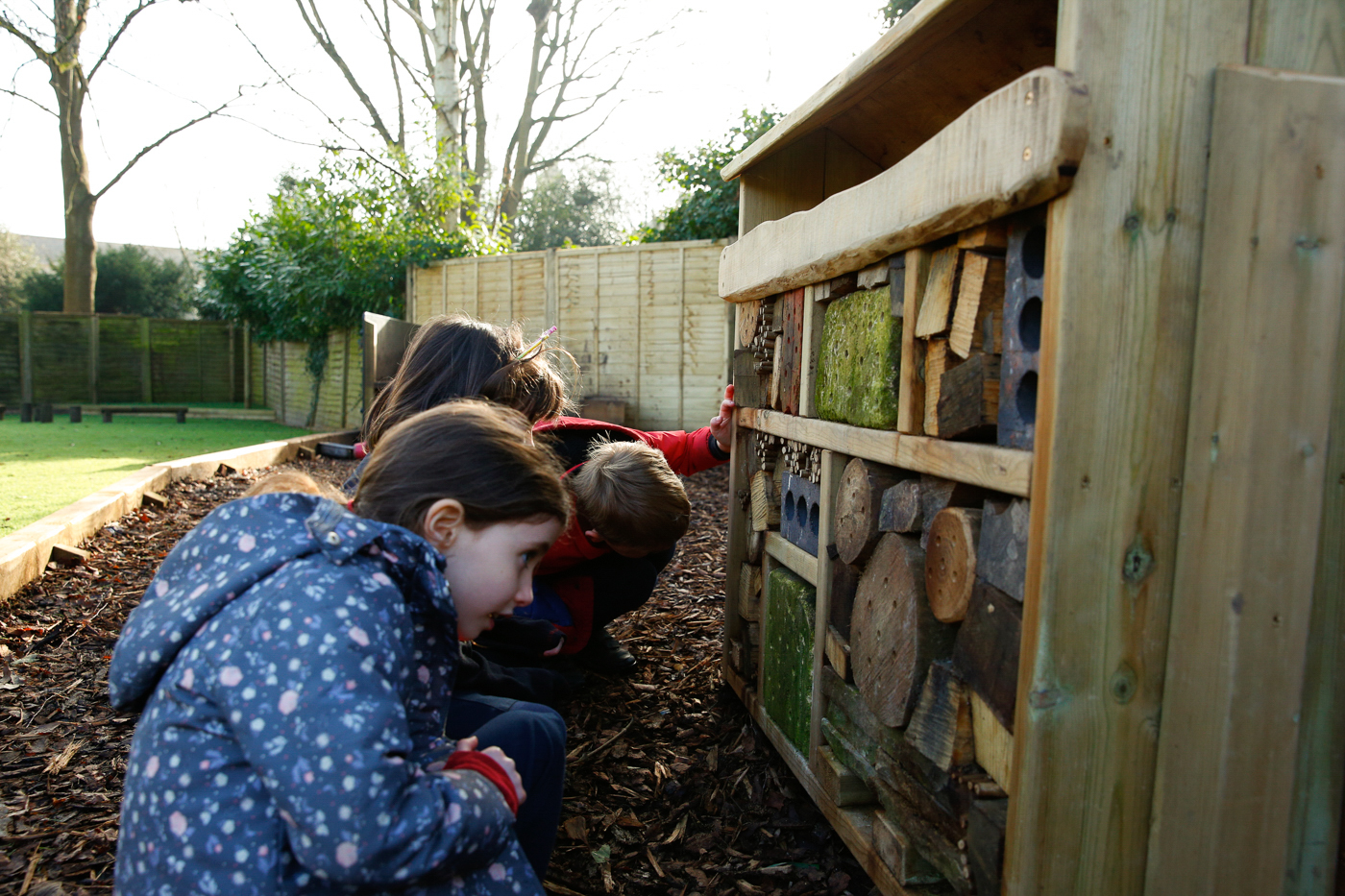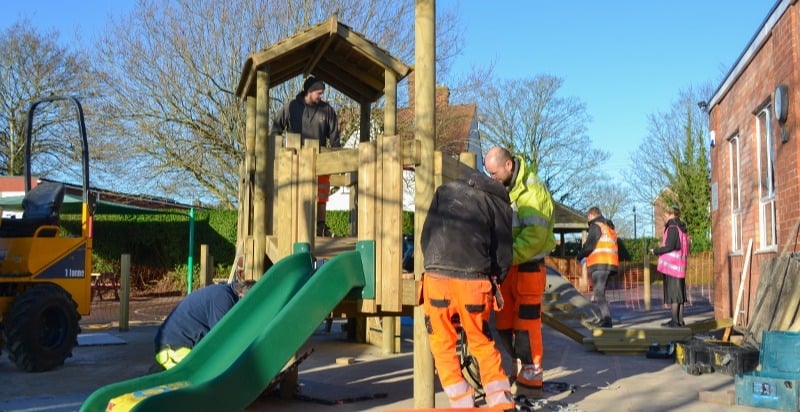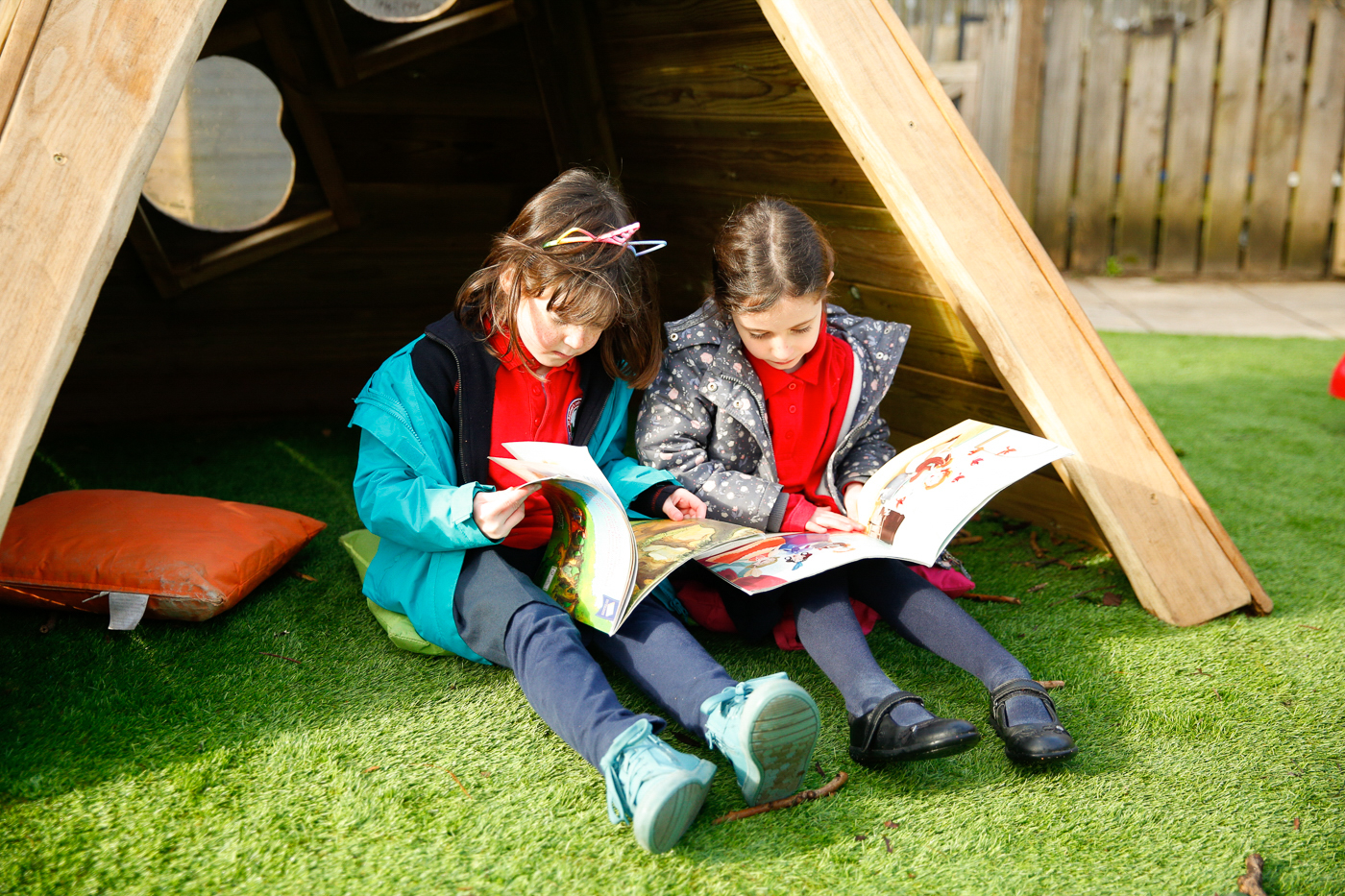Just Like Grass, Play Grass, Astroturf… they’re all common ways of talking about the artificial grass surfacing which is becoming increasingly popular in playgrounds. As a company with commitments to sustainability, we’re often asked about the environmental impacts of artificial grass.
The truth is that, while any plastic product will mean some concerns around production and breakdown, there are environmental benefits to artificial grass that you may not have considered.
All types of play surface have a valuable place in a well-designed playground, and areas of artificial grass can protect natural spaces from becoming worn, muddy, or unusable. It is also important to note that artificial grass cannot be classed as a single use plastic, as it should typically last up to 15 years from installation, withstanding heavy daily use come rain or shine.
Read on for more insights and discussion about the pros and cons of artificial play grass and the natural environment.
Protecting Natural Spaces
Firstly, it’s important to understand artificial grass’ role in protecting the naturally grassy, wildlife rich areas of your school.
Natural grass in a school is precious and should be protected at all costs. However uncontrolled high foot traffic can destroy natural grass areas, so they quickly become worn, leaving grassless compacted soil.
Heavily compacted soil offers little to no environmental benefit to plants or mini beasts and can cause valuable topsoil to be washed away in heavy rain. During wetter months, areas of compacted soil quickly become very muddy and slippery, which in many cases can cause valuable areas of play to be placed out of bounds.
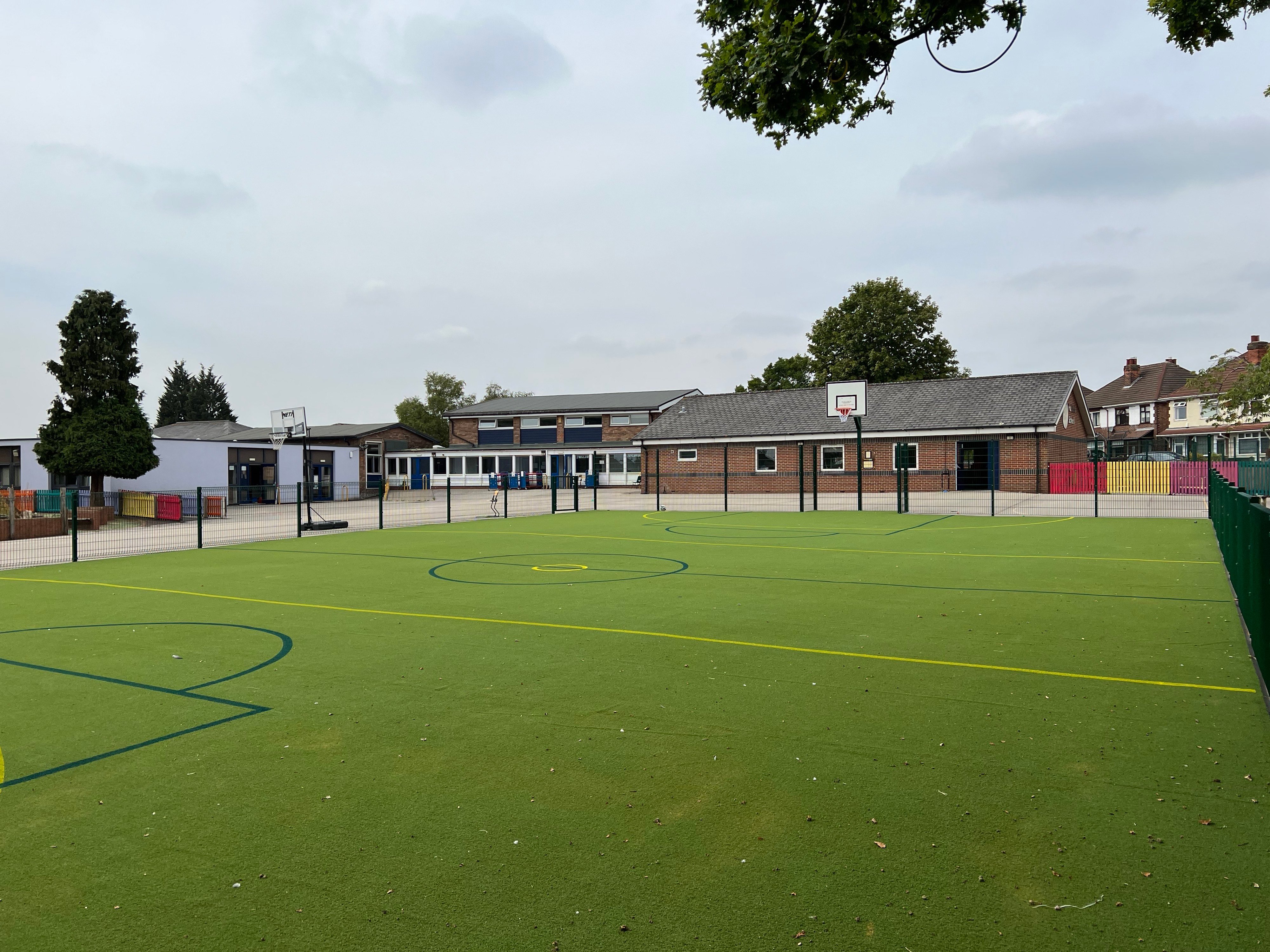
Whilst these unused periods allow the natural grass to recover, it also means that, during wetter months, this precious area of natural playground is taken away from the children, condensing them onto the traditional tarmac space.
A well-designed playground will incorporate areas where natural grass can flourish and be protected, by directing foot traffic onto areas that are covered with, for example artificial grass. This balance will enable schools to have extended areas of well-maintained natural grass throughout the year for sitting and playing on, with areas of artificial grass increasing the space for play during wetter months and avoiding unnecessary damage to the natural grass areas in the playground.
Maintenance
Artificial grass requires very little maintenance. You may need to occasionally sweep away organic debris, such as fallen leaves during the Autumn. In addition, because the surface is porous it can easily be jet washed, should the area be contaminated with animal or bird faeces. The surface is filled with sand and this should topped up and brushed annually to maximise lifespan, however this can be done by a caretaker.
As with natural grass the surface can be treated with weed killer if that is your preference, however this also has an environmental impact.
Drainage
Unlike many playground surfaces, artificial grass is porous, allowing rainwater to drain through into the subsoil. This is an environmental benefit over non-permeable playground surfaces like tarmac or concrete which cause surface runoff, resulting in water being lost straight into the drainage system and in some cases causing areas within the school to be flooded if drains become overwhelmed.
Artificial Grass Alternatives
Play Bark
When schools are thinking about natural, sustainable surfacing solutions, often their go-to is using wood chip or play bark. While this is a great choice in some situations, such as Forest School settings, there are downsides to the surface.
In a school setting, the only play bark that should be installed is that which conforms to BS EN 1176-7. However, this does require the bark to go through a chemical treatment process which will have an environmental impact. The chemical process lengthens the barks life span, so it doesn’t biodegrade so quickly. The treatment process also stops the bark from splintering and being flammable.
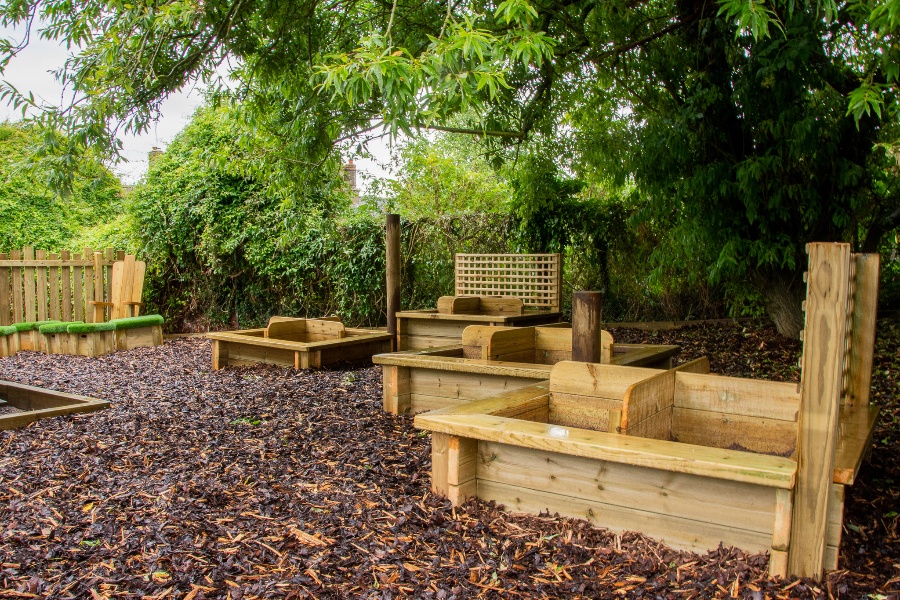
A practical downside of play bark is that it moves and is easily spread through play to other areas of the playground, so time will need to be spent moving it back to where it belongs and regularly topping up areas to maintain the depth of the surface.
The other downside is that it can be very popular toilet choice for animals and daily checks will need to be made to ensure the area is clean and clear.
Bonded Rubber Mulch
Bonded rubber mulch is a continuous rubberised surface made from recycled tyres, so environmentally it is making use of a waste product.
It is an increasingly popular choice for school which does have a long-life span, matching that of artificial grass with minimal maintenance.
There are many other alternatives for surfacing in school playgrounds please take a look at our surfacing and landscape page to fully understand the options available.
Good uses of Artificial Grass
Artificial grass works well as a Daily Mile track, as again it enables children to access the space of a field without the track becoming muddy and slippery through daily use. This also allows the rest of the field to thrive as it is protected by the dedicated area of high foot traffic.
Take a look at how we achieved this in Ridgeway School.
We often install artificial grass on sloped areas, as children love to run and roll down these spaces and undulating surfaces are key to children developing fundamental movement skills. However, without an artificial surface they quickly become worn and muddy, so are placed out of bounds.
Look at our case studies to see how we solved this St Barnabas School.
Looking to the future
Thinking about the future of playground surfacing and artificial grass, we are beginning to see more recycled artificial grass entering the market. However, at the moment, recycled artificial grass is a more expensive option, hopefully over time, the price will reduce making it more competitive.
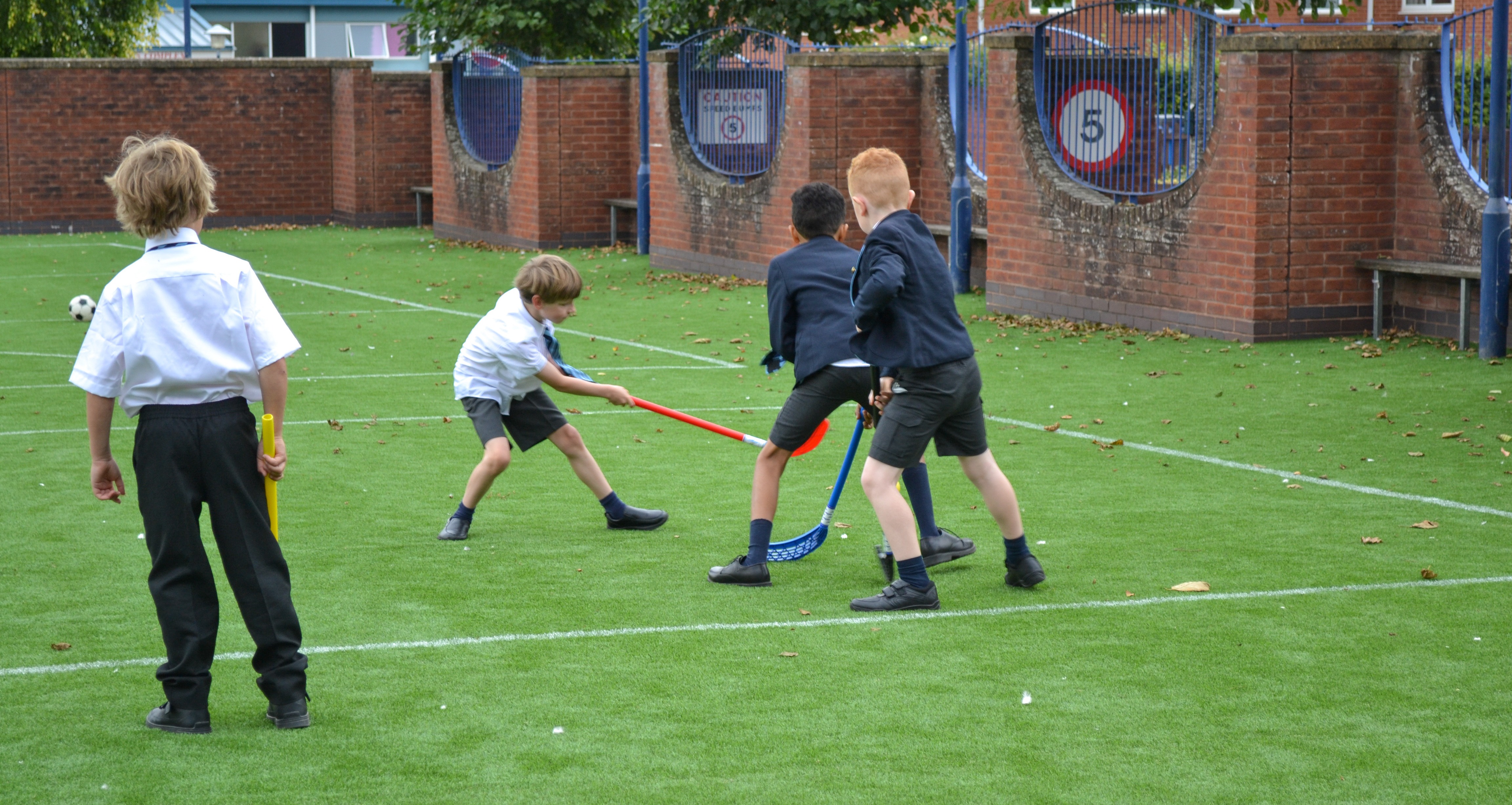
At present, there are only a few recycling centres that will accept artificial grass due to the need to separate the sand from the artificial grass surface. However, specialist companies which can separate, process and recycle the different elements of artificial grass, such as Shred & Recycle Ltd are entering the market and undoubtedly this service will become more widespread.
Other Considerations
There are a number of pieces online about the disadvantages of artificial grass on the environment. However, many of these come with the viewpoint of comparing artificial grass to a natural wildlife lawn.
We would never advocate replacing a thriving natural lawn with any artificial playground surface. However artificial surfaces do offer a good solution if they are replacing an area of muddy, compacted earth.
The key is thoughtful design, so your school playground has a balance of natural lawn spaces and artificial surfaces all doing their job to create a playground that works for the school all year round.
We have designed many playgrounds that incorporate dedicated wildflower areas that can be managed and protected, whilst using artificial surfacing under playground equipment which has a high foot traffic.
While natural grass areas can still be a wonderful place for children to play and explore during the summer, it’s important to ensure that other provisions are made to allow the children a varied choice of play spaces during all seasons and weathers.
I’d like to know more about surfacing options for my school’s playground
Luckily, you’ve found just the right place! Call our playground experts today or fill in our contact form to learn more about different surfacing options and what will best suit the needs of your school.
Originally published Oct 7, 2022 5:10:22 PM , updated December 18, 2023
